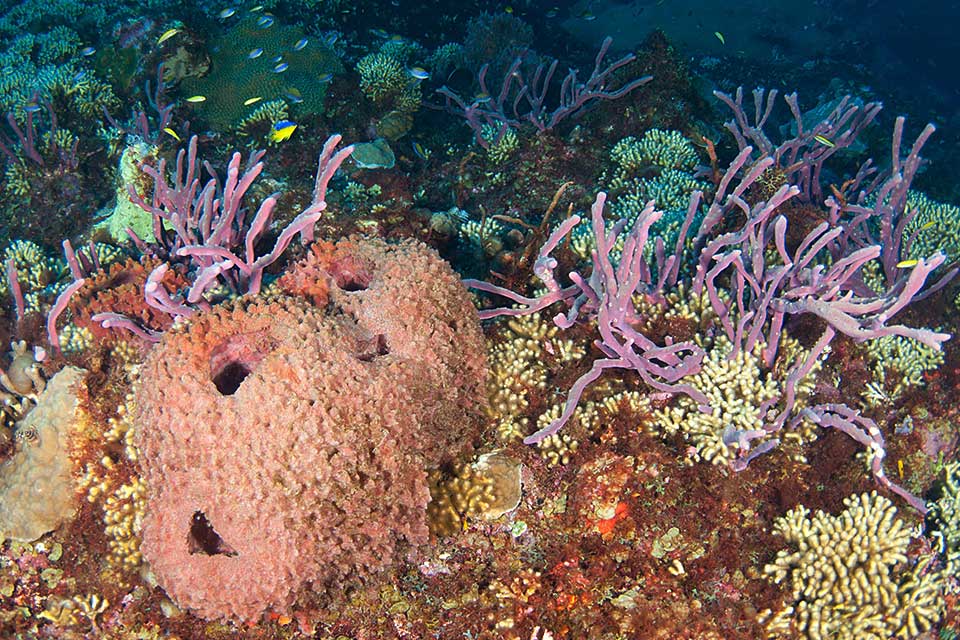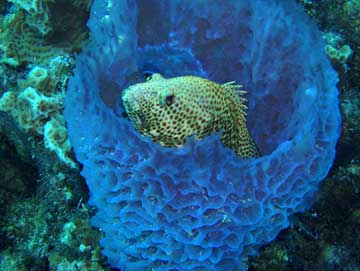What Characteristics Make Sponges Unique Among Other Animals?

A diversity of sponges dot the seascape of Flower Garden Banks National Marine Sanctuary. From round to encrusting to branching, the colors and textures of sponges add together to the complexity of the reef. Credit: One thousand.P. Schmahl

Did you lot know?
Sponges are found in a wide variety of colors, shapes, and sizes and are often mistaken for plants. Scientists believe that their varied colorations may protect them from the sun's harmful ultraviolet rays.
Sponges have been around for a very long time, with certain species having a fossil record that dates back approximately 600 1000000 years to the earliest (Precambrian) period of Earth's history. The approximately 8,550 living sponge species are scientifically classified in the phylum Porifera, which is comprised of four distinct classes: the Demospongiae (the virtually various, containing 90 percent of all living sponges), Hexactinellida (the rare glass sponges), Calcarea (calcareous sponges), and Homoscleromorpha (the rarest and simplest class, but recently recognized, with approximately 117 species).
While sponges, similar corals, are immobile aquatic invertebrates, they are otherwise completely different organisms with distinct anatomy, feeding methods, and reproductive processes. The primary differences are:
- Corals are complex, many-celled organisms. Sponges are very simple creatures with no tissues.
- All corals require saltwater to survive. While most sponges are found in the ocean, numerous species are likewise institute in fresh h2o and estuaries.
Regardless of these differences, sponges are of import inhabitants of coral reef ecosystems. A diverse sponge population can affect water quality on the reef equally the sponges filter water, collect bacteria, and process carbon, nitrogen, and phosphorus. In nutrient-depleted coral reefs, some sponge species are thought to brand carbon biologically available past excreting a form of "sponge poop" that other organisms feed on, thereby fueling productivity throughout the ecosystem. In this way, sponges protect the reef confronting extreme fluctuations in nutrient density, temperature, and light, benefiting the survival of other reef organisms.
A sponge's skeletal type adapts well to its particular habitat, allowing it to live on hard, rocky surfaces or soft sediments such as sand and mud. Some sponges fifty-fifty attach themselves to floating debris! Rarely are they found completely free-floating.
Every bit water filters through a sponge'southward porous outside, the sponge gains some motion, receives food and oxygen, and dispels waste. Within the sponge, tiny hairlike structures called flagella create currents to filter bacteria out of the sponge's cells and trap food inside them. Their stiff skeletal structures assist sponges withstand the high volume of h2o that flows through them each twenty-four hour period.
Source: https://oceanservice.noaa.gov/facts/sponge.html
Posted by: johnsonhatome.blogspot.com

0 Response to "What Characteristics Make Sponges Unique Among Other Animals?"
Post a Comment